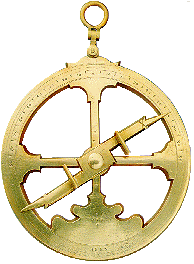29th January 2016 – Nick Rowell
Edinburgh University. "Gaia: The Billion Star Survey Telescope
The Gaia space telescope is the modern incarnation of a very ancient tradition in astronomy: the accurate measurement of the positions of stars. Over the course of its five year mission, Gaia will scan the entire night sky seventy times over, and construct a precise three dimensional map of the positions and proper motions of around one billion stars in the Milky Way. This will provide an enormous quantity of rich scientific data, offering astronomers stunning insights into the structure, formation and evolution of the Galaxy. In addition to stars, Gaia will discover a large number of asteroids, exoplanets, variable stars and supernovae. Almost every branch of modern astronomy will be touched.

"I am a researcher and developer with the Wide Field Astronomy Unit at the Royal Observatory of Edinburgh, working on the data processing and analysis pipelines for the Gaia astrometric satellite. My main area of research involves the measurement and calibration of the point- and line-spread-functions of the optical system, which is crucial for the precise measurement of the positions of stars and other pointlike sources.
Other research interests in astrophysics include: white dwarf stars, proper motion surveys, stellar populations and the Solar neighbourhood. See my publications for more details. I have also worked on industrial assessment studies for the Marco Polo mission, developing optical navigation techniques and simulation platforms designed for landing a spacecraft on a small asteroid.
I will present a broad introduction to the Gaia space telescope, the basic design and observing principles, the current mission status after two years in space, and some of the science that we can expect from it."

Nick presented an informative insight into the planning and research that is the primary purpose of of Gaia's mission of mapping the universe, placing stars and galaxies within measurements of hundreds of thousands of arc seconds accuracy and distances measured to an accuracy this writer was unable to comprehend given the distances involved. Further, the mission hoped to return information on galaxies and the effects of galaxial collisions measuring gravitational distortion and star movement within these merged galaxies. He discussed unexpected results that have been and may be found during the lifetime of Gaia's mission. The first report of Gaia' mission so far are expected this year In July.
Thanks Nick for an exceptionally informative and illustrated talk.
Before a tea break Ken Kennedy updated us on the celebrations this years for the DAS 60th year anniversary, and an "Out of London" conference taking place later hosted by the BAA.
After tea Jim gave a brief look at February's Sky Notes.
Tony then put forward a project he was hopimg to undertake which would involve members of the Society, past and present. Details of the celebrations and Tony's project will be added to this website and/or circulated to members as they become available. He also showed two pictures of nacreous clouds taken by a local artist
Nick Rowell

